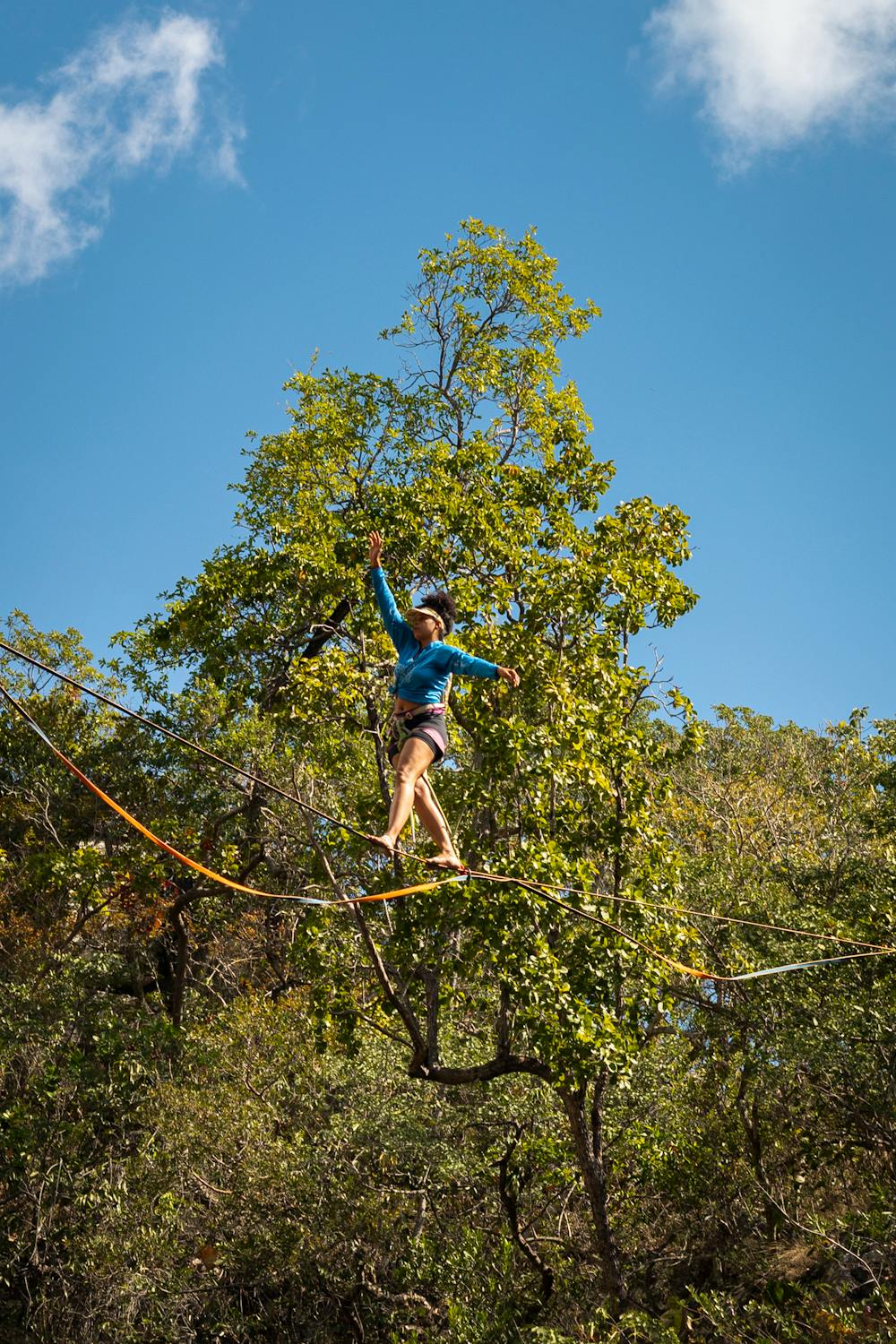Balancing Act: Essential Training Exercises for Mastering Slacklining
Slacklining, the art of walking on a narrow, stretchy webbing suspended between two anchor points, has grown into a popular activity that combines balance, focus, and a touch of adventure. As an exhilarating yet challenging pursuit, learning to slackline requires patience, determination, and, most importantly, the right training exercises. Whether you're a beginner or looking to advance your skills, incorporating targeted training exercises into your routine can significantly enhance your slacklining journey. In this article, we'll explore the essential training exercises that will help you achieve greater stability, control, and confidence on the slackline.
Balance and Core Strengthening
Slacklining demands a solid foundation of balance and core strength. Engaging in balance exercises will improve your proprioception and body awareness, while core strengthening exercises will provide the stability required to conquer the slackline.
a. Single-Leg Stands: Practice standing on one leg for as long as possible, maintaining a steady posture and focusing on your core engagement. Gradually extend the time on each leg to challenge yourself.
b. Yoga Poses: Yoga poses like Tree Pose, Warrior III, and Half Moon Pose are excellent for enhancing balance and core stability. Incorporate these into your routine to build strength and mindfulness.
Static Line Practice
Before attempting dynamic tricks and movements on the slackline, it's crucial to master the basics of slacklining i.e. static line walking. This involves walking the length of the slackline without bouncing or swaying.
a. Basic Walk: Start by holding the slackline with your arms outstretched for balance. Take slow, deliberate steps, keeping your eyes fixed on a stable point ahead. As you become more comfortable, gradually reduce your reliance on your arms for balance.
b. Focus on Foot Placement: Pay attention to where you place your feet on the line. Aim for precision and try to walk with your feet in a straight line.
Dynamic Line Exercises
Once you've honed your static line walking skills, it's time to explore dynamic movements on the slackline. These exercises will challenge your balance and coordination further.
a. Butt Bounces: As you walk along the line, practice sitting down and bouncing back up in one fluid motion. This exercise enhances leg strength and control while getting you accustomed to movements on the slackline.
b. Knee Drops: Lower one knee to touch the slackline as you walk, alternating between legs. This exercise improves leg flexibility and control while adding a dynamic element to your practice.
Leash Training
Using a leash (a safety line attached to the slackline) is a great way to boost confidence and prevent falls when learning new tricks or movements.
a. Controlled Falls: With the leash attached, intentionally practice controlled falls to get used to the feeling of being caught. This exercise will reduce fear and hesitation, allowing you to push your boundaries safely.
b. Catching the Leash: As you progress, work on catching the leash mid-fall to regain your balance and return to the slackline. This skill will enhance your ability to recover from potential missteps.
Mental Focus and Visualization
Slacklining is as much a mental challenge as it is physical. Cultivating mental focus and visualization skills can greatly enhance your performance.
a. Breathing Exercises: Incorporate deep breathing techniques into your slacklining practice. Focused breathing helps calm the mind and improves concentration while on the line.
b. Visualization: Before attempting a new trick or movement, visualize yourself successfully executing it. This mental rehearsal can boost your confidence and improve your chances of success.
Strength and Flexibility Training
Developing overall strength and flexibility will complement your slacklining abilities and reduce the risk of injuries.
a. Strength Training: Include exercises such as squats, lunges, and push-ups in your regular fitness routine to build overall body strength, which will improve your stability on the slackline.
b. Flexibility Exercises: Incorporate stretching exercises like hamstring stretches, hip openers, and shoulder stretches to enhance flexibility, ensuring fluid movements on the slackline.
Slacklining is a rewarding and invigorating activity that offers a unique way to challenge your balance, coordination, and mental focus. By incorporating these essential training exercises into your slacklining journey, you'll develop the strength, stability, and confidence necessary to master the art of walking on the line. Remember that progress takes time and practice, so be patient with yourself as you embark on this exciting balancing act. With dedication and persistence, you'll find yourself gliding gracefully across the slackline, experiencing the joy and freedom of defying gravity with each step.

